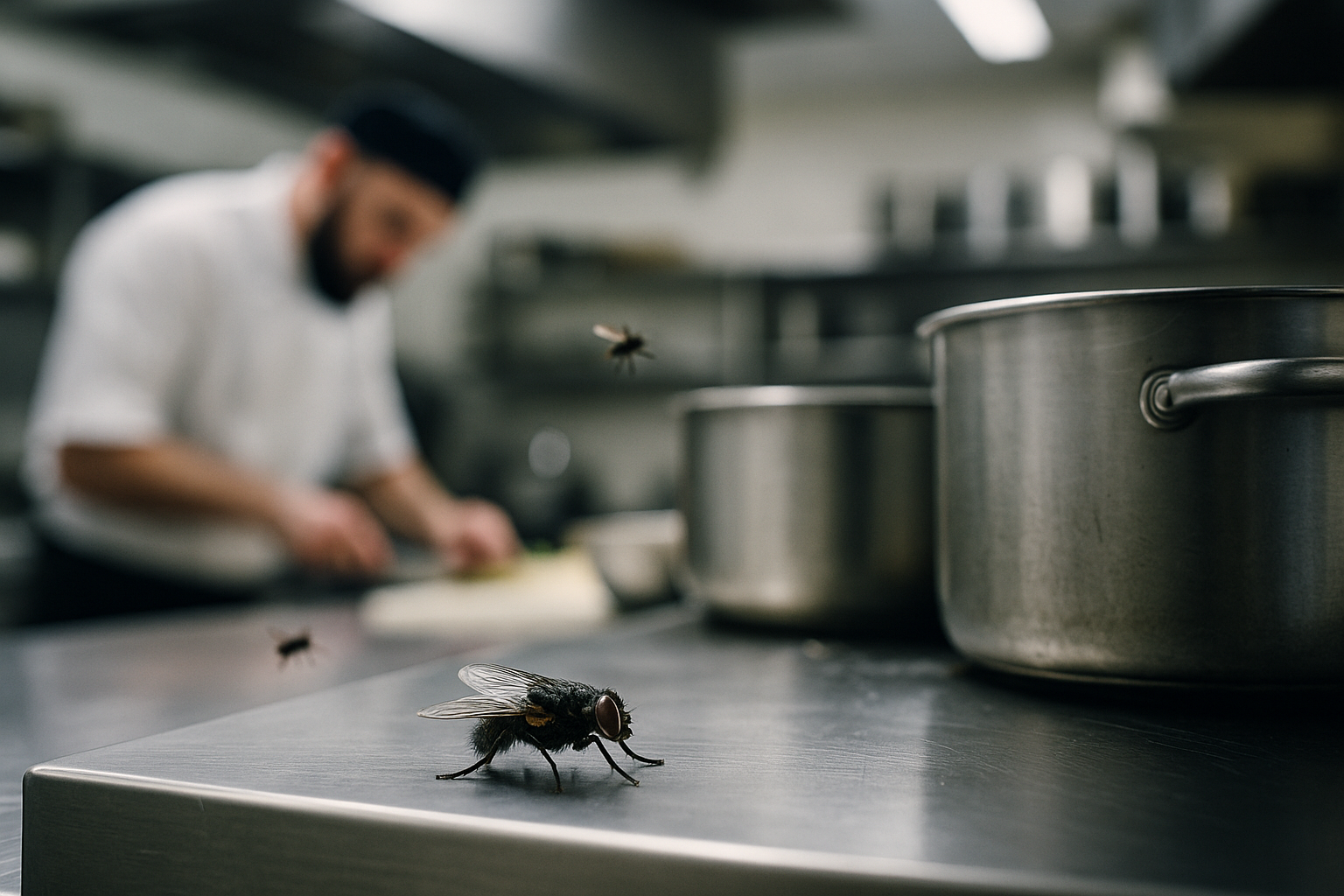Why HACCP is so important in gastronomy
In every professional kitchen – whether restaurant, hotel, or canteen – one thing comes first: food safety.
The HACCP concept (Hazard Analysis and Critical Control Points) requires that all hazards to food hygiene must be identified, monitored, and controlled.
This also includes insects and pests, because even a single fly infestation can:
- contaminate food,
- microorganisms such as E. coli, Listeria, or Salmonella are transmitted,
- and can lead to complaints or closures during inspections.
In short: Without effective pest monitoring, no HACCP system is complete.
Which insects are problematic in gastronomy?
In kitchens, storage rooms, and waste areas, these species usually appear:
- Fruit flies (attracted to organic residues)
- Houseflies (carry bacteria onto work surfaces)
- Cockroaches (hide behind equipment and in cracks)
- Ants (searching for sugar or food residues)
An infestation often begins unnoticed – just a few insects are enough to start a colony.
Therefore: Prevention and monitoring are crucial.
Chemical agents? Taboo in kitchens!
Many instinctively reach for sprays or insecticides in case of acute infestation – but this is not allowed in food areas.
HACCP and food law clearly require:
- No chemical sprays or fogging agents in rooms where food is stored, prepared, or served.
- No residues on surfaces, equipment, or packaging.
- No odor pollution or allergy risks for staff or guests.
Chemical agents can leave residues even with minimal contact, which can trigger microbiological or allergic reactions – and thus constitute violations of the Food Hygiene Regulation (LMHV).
Which methods are HACCP compliant?
HACCP only allows physical and mechanical methods that:
- free of chemical residues,
- safe for staff and food,
- and documentable in operation.
This includes:
- UV or LED light traps for flying insects
- Sticky traps or bait traps for crawling insects
- Steam or hot cleaning systems for surface hygiene
- Sealing and regular inspection of potential entry points
These methods can be used during ongoing operations – without closing the kitchen.
Chemical-free light traps – modern solution for kitchens & counters
In modern businesses, LED UV systems have proven effective for fly control.
They attract insects with targeted UV wavelengths and trap them on a sticky foil inside the device –
completely without electric shock, spray mist, or odor.
Benefits:
- ✅ Chemical-free & residue-free
- ✅ HACCP compliant
- ✅ Silent & unobtrusive
- ✅ Low maintenance & energy efficient
- ✅ Continuous operation possible
An example is the LED-UV device specially developed for use in gastronomy, laboratories, and hygiene areas. You can buy the UV device here in our shop. 👉 NK DECO LED-UV device with shatter protection
It combines modern design with tested food safety – ideal for kitchens, service rooms, or cooling zones.
How to integrate insect control into your HACCP system
An HACCP plan should clearly define preventive pest control.
This includes:
- Regular inspection: Check and document traps or devices.
- Cleaning & maintenance: Regularly change devices and films.
- Waste management: Avoid organic residues.
- Light & ventilation protection: Fly screens, air curtains, or UV traps.
- Training: Inform employees about reporting obligations when sightings occur.
With a combination of prevention and documentation, the operation remains legally compliant and hygienic.
Conclusion: Clean kitchen, secure control
HACCP-compliant insect control does not mean sacrificing effectiveness –
it means acting safe, sustainable and compliant with the law.
With LED-UV systems and monitoring traps, this is reliably achieved,
without chemicals, without risk and without business interruption.
This is how your kitchen stays:
fly-free, hygienic and audit-proof.






